And indeed it was something of a wrench to leave behind not only the delights of zabaglione gelato, but the wonders of the fatty, fatty Italian smoked pancetta that imbued so many of our one-pot camp stove wonders with an effortless glistening unctuousness, of the mouth-watering perfection of mozarella spun straight from the buffalo’s titties, of pasta pressed that very morning, of fresh porcini mushrooms and pistachio pesto. Goodbye to the concept of a slice of white lard as possible burger topping (more John’s thing than mine, to be fair). Goodbye to Chiantis and Puglias and that strange egg sherry stuff that was so good for making cream sauces.
But with more storms on our heels and another country beckoning across the water, it was time for our Italian adventures to come to an end.
After a long stint from Rome (well, Sermonetta) without sleeping under a proper roof, the most exciting thing about the ferry journey was undoubtedly the ferry. Although we hadn’t booked seats and expected to kip on a bench or the floor, the stewards waved us towards the almost empty reserved reclining seat lounge on account of us not being truckers, who on this out-of-season passage constituted the main bulk of passengers.
And lounge we did! The excitement of leaving one country and arriving in a new one rather passed us by – no contemplative moments on deck gazing at a dwindling Italy, or pre-dawn straining for the first glimpse of Greece. We watched a film on the laptop, wrote the previous blog post, and slept in luxury, a row of seats each. That’s not to say there was no sense of transition, even from inside the ship – a visit to the cafeteria at dinner time revealed a line of burly, bearded Greek lorry drivers queuing to pile bowls up with HUGE quantities of salad – an alien sight indeed for a Brit to witness, though (as John pointed out) perhaps British truckers would be more inclined to contemplate lettuce if it was associated with the gargantuan glugs of olive oil and tsunami of salt with which it’s consumed in Greece.
On arrival in Igoumenitsa – a pleasant and laid-back port town just south of the border with Albania – we were soon picked up by a trio of local beggars, in the form of three mangy stray dogs. In a manner strikingly similar to the mafia-run street kid rackets I encountered in Calcutta some years ago, they marked us out and proceeded to politely but firmly (or peremptorily and violently in the case of cats) fend off any other interested strays who approached. My initial nervousness, a result of feeling that we’d basically been chased out of Italy by aggressive farm dogs, soon passed; our new chums followed persistently but demurely, despite our half-hearted efforts to chase them away which they met with a peculiar combination of mournful resignation and total lack of concern. They continued to trail along hopefully as we did the rounds of the green grocer, butcher and, most importantly, the baker’s where I had my first taste of Greek spinach pie (an old favourite of John’s from his days teaching English in northern Greece) and gave us up for a waste of time only when we went to the mobile phone shop to get a new sim card.
Igoumenitsa was a pleasant place – even the stray dogs were agonizingly cute – and felt very chilled out. People just let us be unless we started a conversation (in which case they were very helpful and friendly), and no one gave us, or even our bikes, a second look. After the friendly but fairly incessant curiosity in Italy, it felt rather more homelike – an almost British reservedness, a kind of ‘mind-one’s-own-business’ attitude that was quite welcome. Having said that, given the number of tourists that come to Greece, and the fact that we were in a fairly major port, I suppose we weren’t all that remarkable, even with the bikes.
And so we launched ourselves down the stunning west coast of northern Greece. Feeling surprisingly exhausted by mid-afternoon (surely nothing to do with the hearty taverna lunch we’d just washed down with beer) we decided we were due a day off and started hunting for spots to camp. We soon happened upon a gorgeous little cove, tucked under the coast road, miraculously hidden from the gaze of passing drivers.
The beauty and peace of the spot was marred only by another new companion which, despite being a cat, I came to think of as The Worm In Paradise:
This evil feline made its acquaintance with us by climbing up on the bikes to tuck into our bread (naively left tucked under the cargo net) while we were deciding on our camping spot, then proceeded to harry us incessantly while we cooked and ate. Shooing it, hissing at it, even throwing stones at it (well towards its general vicinity) elicited no other response than a hurt look, as if to say, ‘Well that’s rich – you come here and stick your tent on my beach, don’t share your food, hiss at me like it’s your beach and I’m the invader – and now you’re throwing rocks at me! What have I done to you?’ Of course giving in and sharing food only made her more persistent and daring.
Onwards down the coast, past the picture-perfect Parga, much the better for the absence of the tourist crowds that throng there throughout the summer…
… and past some impressive local flora…
… and a surprise herd of feral pigs, which sadly we didn’t manage to photograph.
Stumbling into the lands of mythology, we crossed the Acheron, the river of woe across which Charon once ferried the dead to the underworld (these days they just take a package tour) and picked out a cove to camp in – just one cove down from what the local tour guides like to refer to as “Odysseus’ cove” where the wandering hero was said to have landed. Odysseus missed a trick – he should have gone half a mile south to Aonaki beach. This place was (and I don’t say this lightly) the most beautiful drop of coastline I’ve ever encountered. My phone camera couldn’t do it justice, so here are some other pictures people have posted on the interweb and I’ve shamelessly nicked:
Miles from any habitation or through-roads, accessible only by a narrow eroded path down the cliffs, lay a deep lagoon within a perfect three-quarter circle of towering rock, and the water – oh the water… Despite the cool evening air, we stripped off to swim naked through the surface of sapphires and emeralds. Better yet, there was a perfectly flat terrace halfway down the cliff which was ideal for camping (a relief since the high water mark came worryingly close to the cliffs down on the beach). It even had a fresh-water shower – a boon for which any cycle tourist thanks the gods of the road. And no cats.
Our next port of call was Preveza, where John taught English some years back. A pretty and pleasant port town, it also represented something of a quandary as to our next step, since it sat on the northern edge of a huge gulf, separated from the southern spur by a mere 909 meters, but connected only by means of a tunnel forbidden to cyclists. The old ferry service was discontinued when the tunnel was built, and the gulf itself represented the best part of two day’s riding to circumnavigate, so somehow or other, we wanted to cross at Preveza. But that was a challenge for the next day.
First we faced the almost unbearable joy of our very favourite activity: finding a laundrette! After spending several fruitless hours on this quest – apparently such things are virtually unknown in Greece, where if your washing machine breaks down (or if you’re a man) you take your laundry over to your mum’s – we gave up and went to find the ‘frontisteria’ (evening school) where John used to work. As well as a social visit, I suppose I was vaguely hoping that an old colleague might offer use of their washing machine if we dropped enough hints, though John thought this unlikely.
Frontisteria seem to be used across the country as a top-up to state education. Greek children spend their mornings in school, have a siesta in the afternoon, and then pile off to private evening schools where, according to accounts from students, parents and even teachers we’ve spoken to, quite a significant part of their education seems to take place. Not having any first-hand experience of Greek schools, I wouldn’t really want to suggest why this is; suffice to say, the need to pay for private education through evening classes is a pretty heavy financial burden for families at the moment in Greece.
This, it turned out, was rather tragically illustrated by John’s former place of employment. We trundled along in the evening when lessons should have been in full swing, but found it locked up and dark. By an remarkable coincidence, in the five minutes we spent hanging around wondering what to do next, the deputy head of the school rode past on a bicycle. In a perfect and depressing illustration of the economic crisis – the Disaster as people here call it – Greece is facing, she explained that the school went bust, not only because the students couldn’t afford to pay their fees, but because the government charged the school tax on the income they hadn’t received. Unsympathetic officials suggested they sue their students’ families for the missing money; of course they did no such thing. Instead, the school, which the owner had spent years building up into a really decent establishment, shut for good. (She didn’t invite us to use her washing machine.)
We returned to the quayside to tackle the question of how to cross the gulf. We managed to chat up a local fisherman (a miracle since he spoke no English and we spoke no Greek) and agreed to meet him at the quayside at 10am the following day. We confirmed this with diagrams of clock faces and everything, and felt confident that we all understood each other, but sadly he didn’t show up the following morning, though his boat was still there. Well, at least we got to keep the bottle of 5-star Metaxa (mmmm sweet Greek brandy) we’d bought him for a thank-you present.
Meanwhile, we’d managed to glean from other cyclists’ blogs that we could get through the tunnel by attracting the attention of the tunnel authorities, who would send a van. On the south side, you can simply walk up to the booth to arrange this, but since there was no booth on the Preveza (north) side, we cornered some coast-guards who were inspecting a wonky lamppost on the quayside. They called the tunnel people, a rendezvous was arranged, and we and the bikes hitched a ride under the water.
Storms hounded us down the next part of the coast, a kindly campsite owner let us in, even though they were closed for the season, but next day the weather worsened again. Although we managed to miss the most extreme downpours, we passed through one flash-flooded village after another and decided that this was a night for a hotel. There is a very special satisfaction to hearing thunderclaps explode directly overhead while rain lashes the windows and the wind howls outside, which can only be appreciated after you’ve been sprawled across a leaking tent desperately trying to hold the pegs into the ground from the inside while the wind tries to whip it away, or after waking up in the middle of a stormy night to discover a small stream has decided to run under your pitch.
After stopping to admire some more old stuff…
… it was time to get a move on and get to southern Greece, via the ferry from Anterio to Rio.
The next stretch was rough. For the sake of other cyclists (sorry if this is a bit boring for friends and family) the road along the northern edge of southern Greece seems to be a necessary evil for travellers to Athens. The new national motorway from Parga to Athens certainly takes some of the traffic pressure off, but the old national route is still crowded and unpleasant, thanks to the fact that the motorway is still only one lane each way (!) and yet incurs tolls. In fact, they are expanding the motorway at the moment, which meant the worst problem we faced was construction vehicles (what is it about cement truck drivers – why ARE they all such dicks?). We got onto the old road on Friday afternoon, and it was pretty hair-raising, with little space for passing, and lots of impatient road-builders in BIG vehicles keen to finish work and get on with their Friday night socialising.
Matters were not helped by a scar from some kind of pipe laying work that seems to run along the edge of EVERY SINGLE MAIN ROAD in Greece, patched up with cheap, bumpy tarmac that is unbearable to ride upon for more than two minutes. Luckily, car drivers seemed sympathetic to this – no one wanted to drive on the outer half of the lane, or expected us to either.
Fortunately, Saturday and Sunday were much, much better (though still with the cement trucks, even on Sunday!). Anyway, if any fellow cyclists are planning to do this stretch of road, our strong recommendation is wait until the weekend when there are fewer heavy goods and construction vehicles, and get it behind you as quickly as possible. And when you get close to Athens, well, good luck in the patches where the hard shoulder disappears.
Our final stop before Athens was in Corinth. I was glad to discover that unlike Neil Gaiman’s embodied nightmare…
… Corinthians don’t have teeth for eyes. Indeed, quite the contrary – the ones we met were very hospitable! We rolled up after dark to discover, not entirely to our surprise, that Corinth municipal campsite was closed, but a gorgeous, generous family who lived next door invited us to stay, and plied us with food and homemade wine and tsipouro (a distillation made from grapes) in return for some fiddling and trumpeting. I abjectly failed to get their family name, but here they are:
Though our mad slog to get to Athens before the weekend ended left little time for touristizing, we simply had to stop and gawp at the Corinth Canal. Cut down through 90 meters of living rock, to connect two seas separated by a mere 6.4 km of land, the canal was first conceived of in 700 BC by the tyrant Periander but no attempts were made to actually build it until around 100 BC. The idea took on something of a cursed air after three Roman emperors – Julius Ceasar, Caligula and Nero – all planned to construct it, but died before their projects got underway. Even the Venetian colonialists in the late 16th century didn’t manage to pull it off. After Greece became independent from the Ottoman empire in 1830, the idea was revived in a flurry of nationalist fervor, but after many more false starts and bankruptcies of those who attempted it, the canal wasn’t completed until 1893. Unfortunately, by that time, ships were much bigger, and since it is only 21.4m wide at its base, it was commercially pretty useless.
Frickin’ amazing though:
And so, after a hard, occasionally hair-raising, but not too long day’s ride, and after three months on the road and 4430km on the Odyssey-meter, we made it to Athens! To hell with all that new-fangled Roman stuff with their fancy arches and concrete domes: here are some REALLY big columns!
We were also amused to discover the phenomenon of guerilla knitting has reached Athens…
…as have funky bike shops, like this one where John got a new, super-tough world touring wheel and I got myself a pre-emptive birthday present in the form of a Brooks saddle, in the hope of countering an increasingly worrying persistent backache:
We were also enthralled, on a day trip to Poseidon’s temple at Cape Sounion with our wonderful Athens hosts Maria and Iannis, with the hope that we might just have skipped winter altogether and found spring:
(T’was sadly not so, but that’s a tale for next time). At least we had the last taste of summer with the best breakfast ever (says Ginevra – I think John would still rather have a lard-burger) in the form of Greek yoghurt and fruit with a homemade pomegranate coulis, snapped here alongside Maria’s photo of a wintry Whitby beach, just to remind us of where we’re not:
Apart from the obligatory visit to the Acropolis (they seemed to be in the process of dismantling and rebuilding the Parthenon) most of our touristy energy was spent over two days exploring the Athens archaeological museum where, to my astonishment, you’re allowed to take photos of the exhibits. There was so much amazing stuff there, I’ve confined myself to sharing (almost) exclusively snaps of items depicting thoughtful faces, octopuses and, as Maria put it, naughty bits (most of which seemed to be associated with musicians, for some reason):
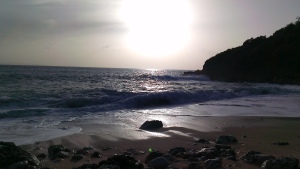
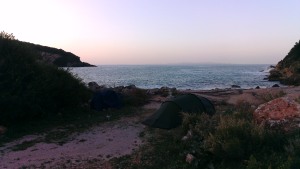
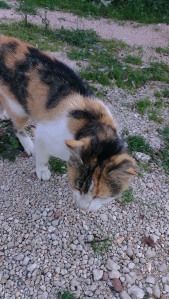
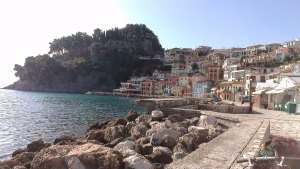
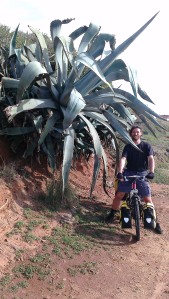
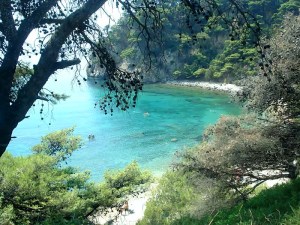
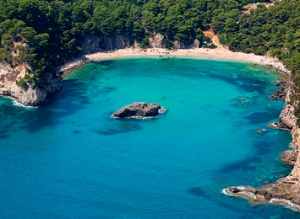
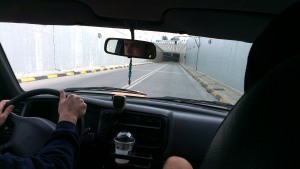
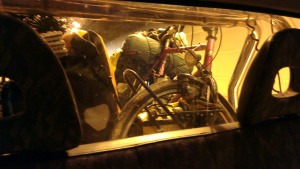
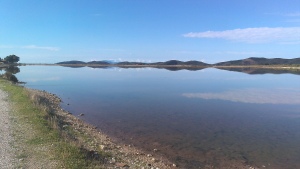
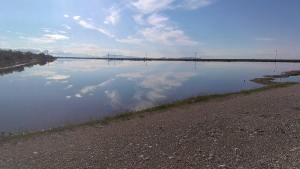
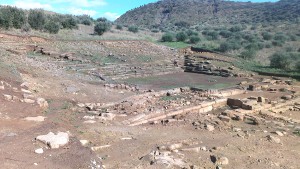
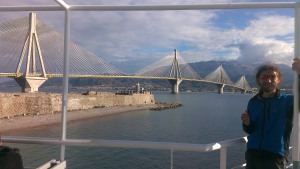

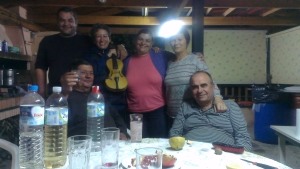
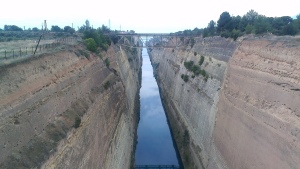
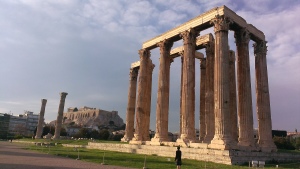
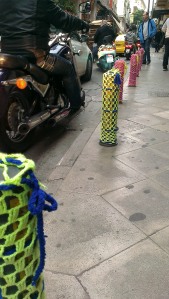
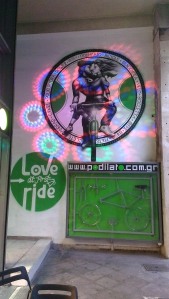
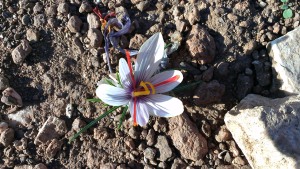
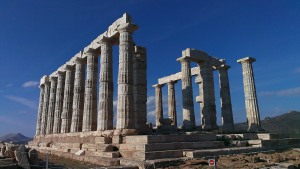
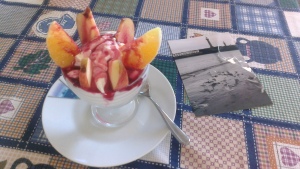
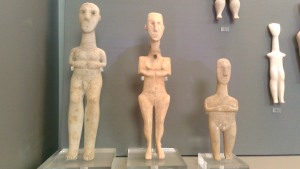
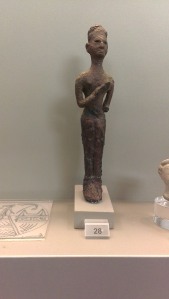
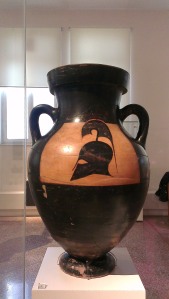
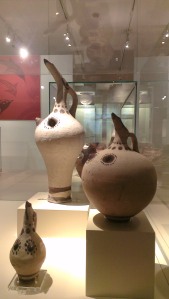
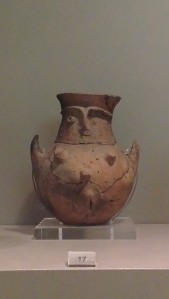
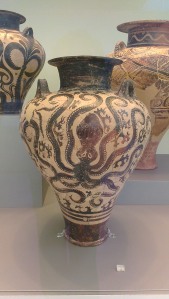
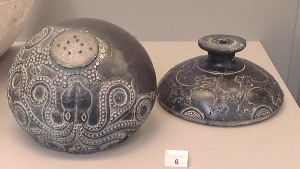
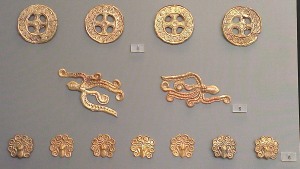

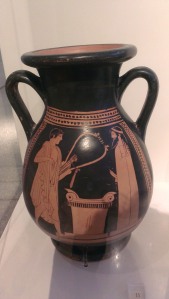
Wellcome to Greece!!! I hope to see you in Orestiada soon. Have fun and don’t drink so much tsipouro!!!
Regards.
Theo
LikeLike
Congratulations on your safe arrival, and another interesting and entertaining blog. Great pics, and mouth-watering descriptions of food … you are definitely getting fit in the process.
Love, Mum, Dad and Grandma xxxxxx
LikeLike
And indeed it was something of a wrench to leave behind Iya roads, but the wonders of the concrete articles in Awa Life and smoked JET journalism that imbued so many of our one-pot french horn and violin Indian ragas with an effortless glistening use of amazing language, of the mouth-watering friendship that someone has not forgotten and hopes to pursue in some geography of the future, spun straight from the fresh porcini downloads of animal songs from the mid 1930s.
LikeLike
where are you now? greece still? something went wrong i hope not?
LikeLike